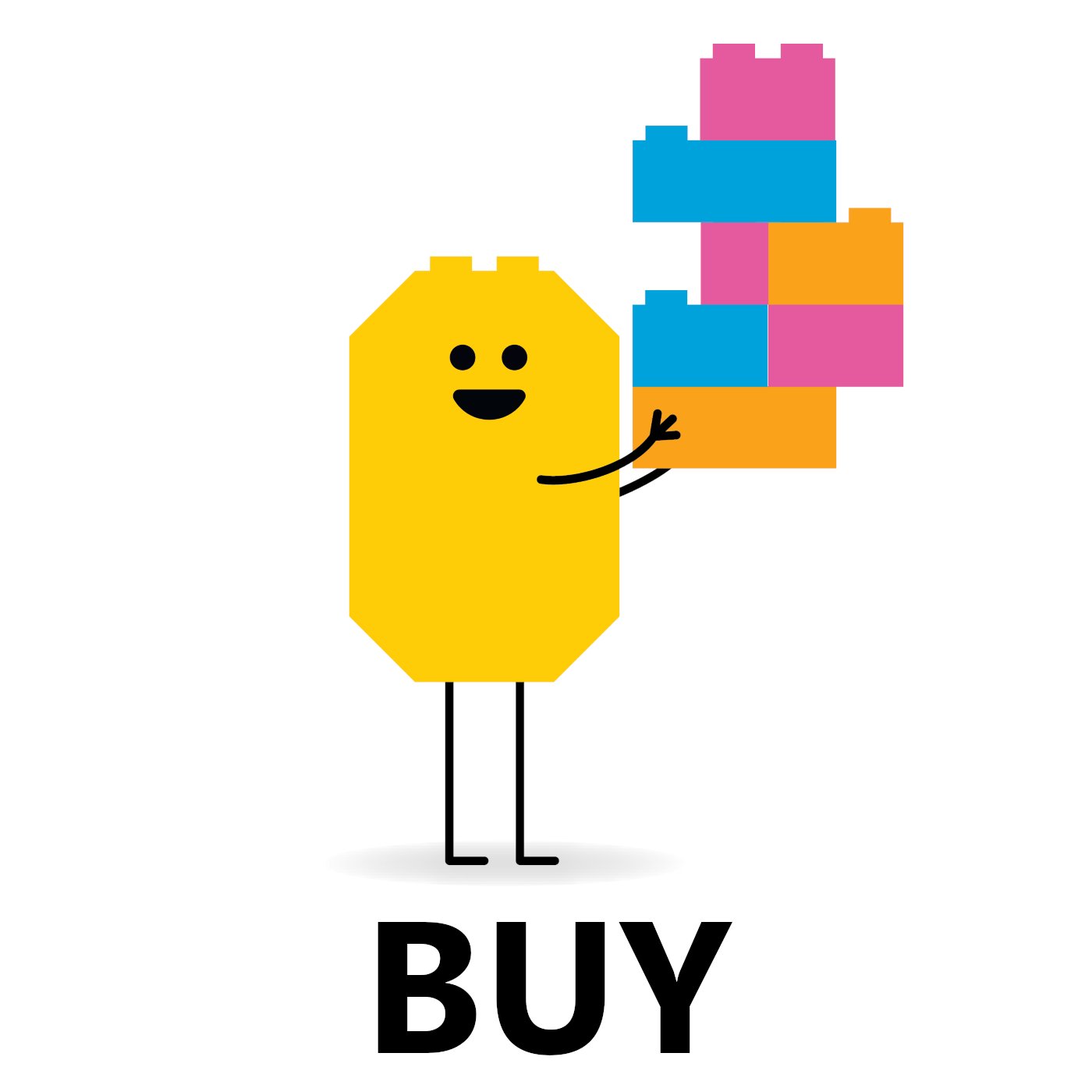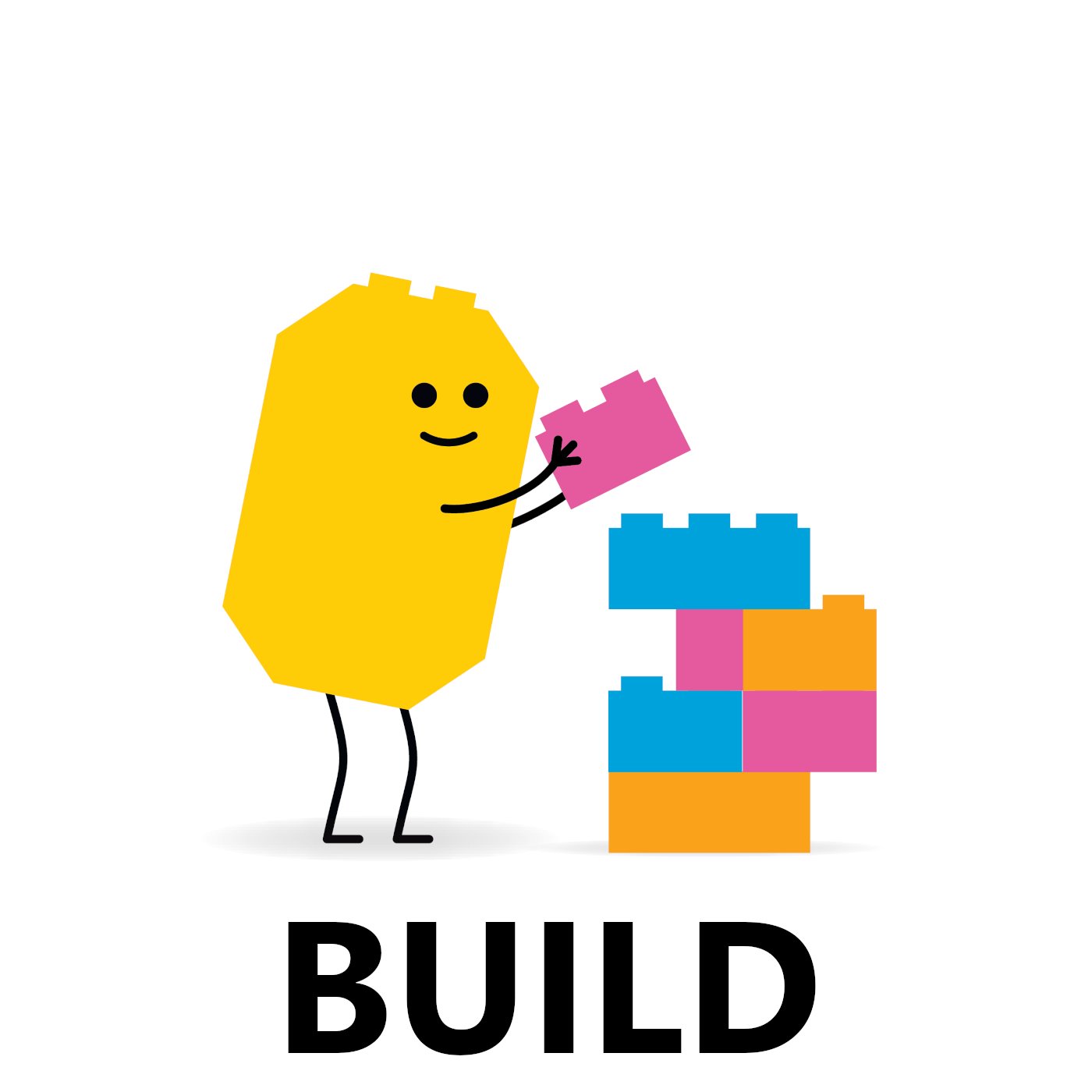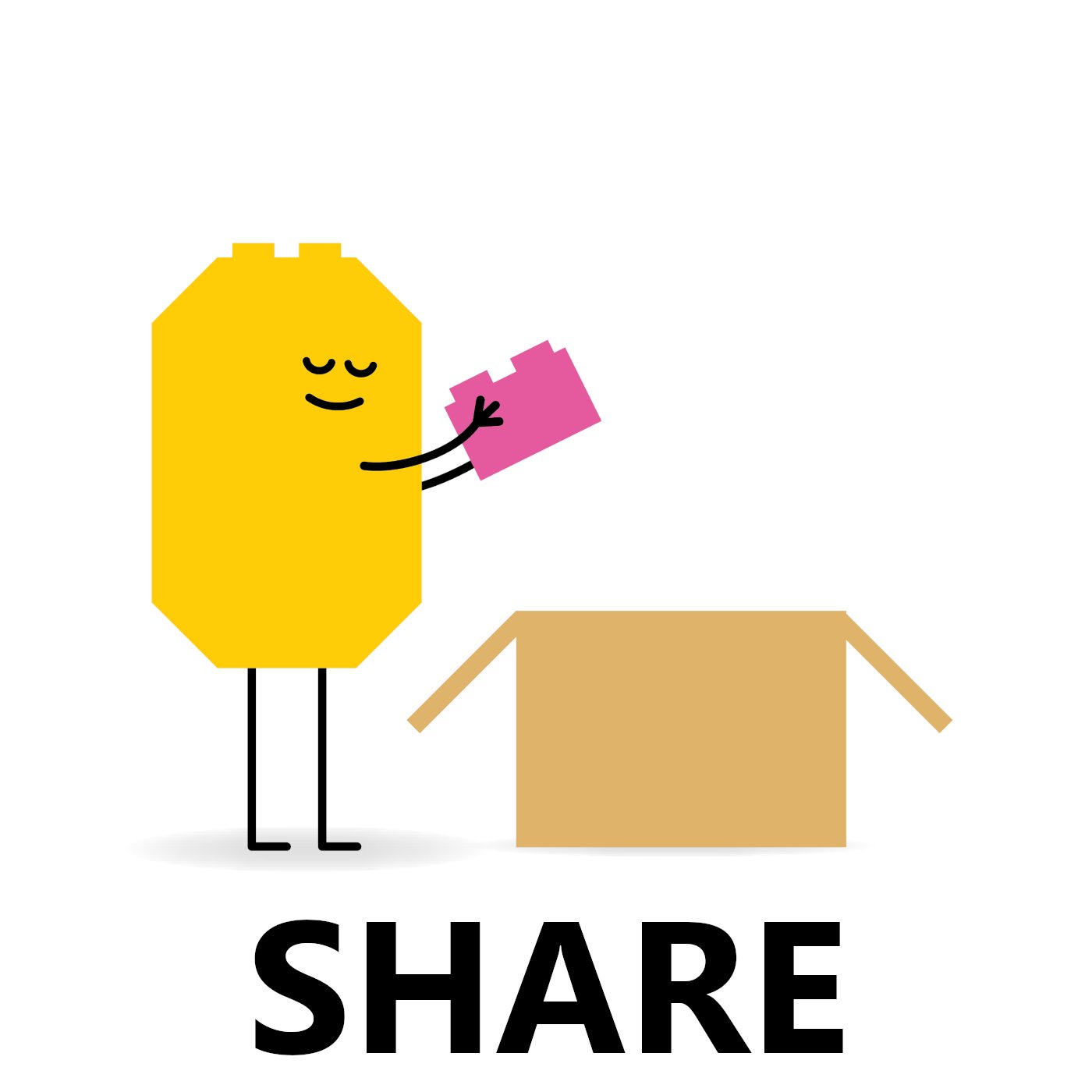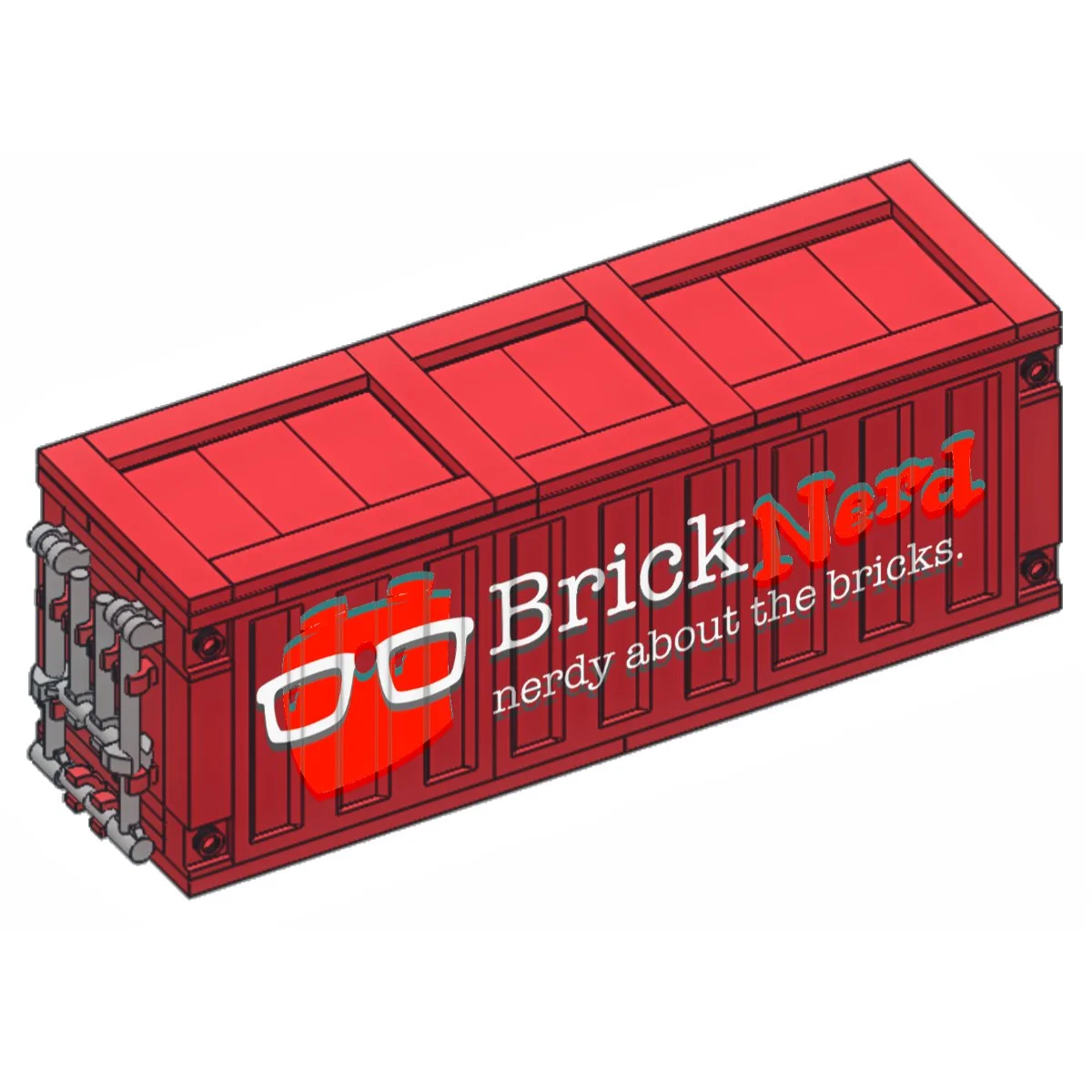LEGO To Impose Lifetime Purchase Limits with LEGO Max
/The LEGO Group has announced a new initiative called LEGO Max that will implement lifetime purchase limits for customers as part of their corporate sustainability strategy. Named after the now-defunct LEGO Club mascot, LEGO Max seeks to “maximize fun for all” while being responsible stewards of their planet protection promise.
As the main tenet of LEGO Max, the company will cap their overall production output (even though demand for LEGO products continues to grow each year). This means that once all existing factory construction projects are complete, the company will no longer expand production capacity. With a finite supply of products, the added customer lifetime purchase limits are meant to ensure that LEGO fans prioritize the sets they want most.
A sub-initiative of LEGO Max is their “Share More – Build More” effort, which will give fans the ability to earn offset purchasing credits by reselling new or used LEGO products on BrickLink. The intent of the earned credits is to ensure that the fixed supply of LEGO circulates to those who want it most, helping every LEGO fan maximize their collection. In effect, any LEGO fan could conceivably buy an unlimited number of sets from LEGO, provided that they keep reselling some on BrickLink to stay below their lifetime limit.
EDIT: If you haven’t noticed by now, this was an April Fools joke, so enjoy the rest of the article as it was originally published. Thanks for playing along!
LEGO Max
In their press release included below, LEGO says that the initiative is primarily based on sustainability efforts rather than focusing on the details of the lifetime purchase limits.
THE LEGO® GROUP LAUNCHES LEGO® MAX™ EFFORT TO MAXIMIZE FUN AND SUSTAINABILITY
BILLUND, Denmark — The LEGO® Group is thrilled to unveil LEGO® MAX™, a new effort to help LEGO® fans maximize their fun while adhering to our leading sustainability goals. This initiative encourages LEGO® fans to prioritize their collections by sharing older LEGO® sets, ensuring that these cherished toys can bring joy to others rather than remaining hidden in closets and attics.
In a bold move toward sustainability, The LEGO® Group will introduce a global production cap, accompanied by individual lifetime purchase limits for LEGO® products. To mitigate any disappointment, the “Share More – Build More™” system has been created, allowing fans to earn offset credits by reselling LEGO® sets through BrickLink®. This system encourages continuous building within the community while adhering to the new purchase limits.
“All current LEGO® factory expansions and new construction projects will be completed as planned, but this will end all further production expansion efforts,” said Björk Schoenwald, LEGO® Chief Operating and Production Officer. “This includes the 1.7 million-square-foot factory under construction in Virginia, USA, and our first carbon-neutral factory almost completed in the Binh Duong Province of Vietnam. Naturally, all factories will continue to implement technology improvements to optimize LEGO® production while maintaining the capped production footprint to better maximize our planet promise.”
LEGO® MAX™ will be rolled out in the coming months, with the LEGO® Insider™ platform being central to the “Share More – Build More™” credit system. LEGO® Insider™ IDs will be merged with BrickLink® accounts and will now be mandatory rather than voluntary on all LEGO® purchases. LEGO® is also investing in biometric security options to ensure that abuse of the credit system will be minimized.
The LEGO® MAX™ initiative aligns with The LEGO® Group’s commitment to global Reduce - Reuse - Recycle sustainability objectives:
Reduce: Alongside reducing retail box sizes to minimize packaging waste and transportation resources, the production cap serves as a proactive measure against the growing demand for LEGO® products in addition to not increasing further fossil fuel consumption.
Reuse: LEGO® bricks’ compatibility over six decades highlights their immense potential for reuse, further supported by initiatives like reusable Pick-A-Brick™ containers and shopping bags in select markets. Lifetime purchase limits will only increase the reusability of LEGO® products beyond their first purchaser.
Recycle: The transition to paper-based bags from single-use plastic and the recyclability of LEGO® cardboard boxes are only the beginning of The LEGO® Group’s recycling efforts. The “Share More – Build More™” credit system will further sustainability along other campaigns like LEGO® RePlay™.
The LEGO® Group believes the LEGO® MAX™ initiative not only supports sustainability but also offers Adult Fans of LEGO® (AFOLs™) a refreshing opportunity to declutter their collections, making room for new creative endeavors. This innovative approach promises a brighter, more sustainable future for LEGO® fans and the planet alike.
“Share More – Build More”
While improvements in sustainability are laudable, the LEGO Max press release raised quite a few questions here at BrickNerd. In contrast to the current atmosphere of capitalistic-fueled consumption of LEGO, the new credit system seems to drastically alter the way fans will be able to collect as many sets as they like (or have room for). After many requests, BrickNerd was granted an interview with Björk Schoenwald, LEGO’s Chief Operating and Production Officer, to clarify a few points.
BJÖRK SCHOENWALD, LEGO Chief Operating and Production Officer
BrickNerd: Thanks for speaking with us about LEGO Max and the new “Share More – Build More” credit system. From the fan perspective, it seems the real headline is the lifetime purchase limits. Why didn’t the press release start with that aspect?
Schoenwald: LEGO is all about providing the best building experience for consumers of all ages. We didn’t want to implement a production change with a potential impact on our most engaged customers without offering a plan to minimize that impact, hence the credit system.
BrickNerd: Doesn’t limiting production capacity run contrary to the fundamental business goal of increasing sales?
Schoenwald: While LEGO is indeed a business, our market share can’t grow any larger without becoming a full-fledged entertainment company like Disney. Instead of expecting double-digit growth every year, we are doubling down on being a responsible steward of our planet’s limited resources. We have enough money, so now all we need to do is maintain that ability to innovate. We have regularly implemented industry-leading sustainability initiatives, and LEGO Max is perhaps our most ambitious initiative yet in that direction. Fortunately as a family-owned business, we are able to take bold steps like this to lead the industry while being both responsible and profitable.
BrickNerd: How long has LEGO Max been under development? Since BrickLink is owned by LEGO, we can only assume that the purchase of the site was a strategic move in preparation for the “Share More – Build More” system.
Schoenwald: We’ve been working on LEGO Max for half a decade. The purchase of BrickLink was to protect the LEGO community’s ability to share resources and in preparation for the “Share More – Build More” credit system. The switch to LEGO Insiders and the introduction of QR codes on LEGO instructions are also part of LEGO Max, as that helped us collect information to determine everyone’s starting credit balances based on the sets they already have. Some people will already be maxed out on day one, so they can either enjoy what they have or start selling on BrickLink to free up some purchase credits for new products.
BrickNerd: Since LEGO receives a small percentage of every sale on BrickLink, how do you respond to those who say that this is an attempt to drive up prices on the secondary market and benefit again from re-sales?
Schoenwald: LEGO is committed to letting the free market determine pricing. What sets and parts LEGO fans hold on to vs. choose to sell is up to them. LEGO is merely trying to provide an incentive for fans to put sets back into the ecosystem to be enjoyed by other builders. We anticipate that there may actually be price reductions for many sought-after sets by encouraging an increase in supply. If you allow me to share my screen, you can take a screenshot of how we intend for this ecosystem to operate.
BrickNerd: Are you able to share the rest of that presentation? It looks like it could potentially answer many of our other questions.
Schoenwald: I’m being told I probably shouldn’t have shared that with you, so unfortunately no. More information will be forthcoming in the near future. As you haven’t asked any questions relating to our sustainability efforts, I only have time for one more question.
BrickNerd: How does LEGO anticipate being able to track the lifetime purchases of customers, especially when gifting and trading of parts and sets within the community is so prominent?
Schoenwald: Specific details on the “Share More – Build More” system will be revealed soon, though I can say that we have tried to anticipate everything as we have prepared for this launch. In addition to tracking customer data I mentioned previously, LEGO IDs will become permanent and we are installing biometric security at all of our LEGO Brand Stores and our major retailers to ensure people only use their own purchasing credits. We have also instituted legacy credits so parents can transfer ownership to their children as long as the child also has a LEGO Club membership through our LEGO Life app which will then convert to a LEGO Insiders account when they turn 18.
For AFOLs, we are creating a community credit exchange rate so trading of parts and elements will occur at the current market rates to be more fair to the entire ecosystem. We know we can’t track everything like purchases outside of major retailers and BrickLink, which is why sellers will only have the ability to sell sets and parts that we already have record of them purchasing, thus establishing a closed-loop verification system for the LEGO Max initiative. And as always, we will launch contests with purchase credit rewards through LEGO Insiders and LEGO Ideas so those who really want to buy more LEGO can earn that privilege through building with what they have and their own creativity.
BrickNerd: Thank you for the insights. We will follow up with your PR representative for any other questions.
The End of the Era of Excess
Obviously we were left with more questions than we started with about LEGO Max. How did LEGO determine the appropriate amount of lifetime purchase credits for the “Share More — Build More” system? How will they enforce credit transfers of international sales and trades incorporating currency exchange rates? Outside of environmental reasons, why did LEGO really decide to make this change?
Image via Bricksie
Is this program a commentary on the AFOL tendency to hoard sets like investments rather than build them? Will LEGO Max have the effect of raising LEGO prices on the secondary market or lowering them? What are the security implications of this program? Will AFOLs reduce their spending and prioritize their collections or recruit friends and family to circumvent the new system?
And at the end of the day, how will a LEGO Store employee tell a kid that they are not allowed to buy a minifigure they want because their parents have already maxed out their lifetime purchase credits? Will LEGO Max truly end up maximizing our collections or simply enforce arbitrary maximums? Only time will tell…
How will LEGO Max impact your purchases? What questions do you have about the “Share More - Build More” lifetime credit system? How long did it take you to figure out this is an April Fools joke? Leave your thoughts in the comments below.
Do you want to help BrickNerd continue publishing articles like this one? Become a top patron like Charlie Stephens, Marc & Liz Puleo, Paige Mueller, Rob Klingberg from Brickstuff, John & Joshua Hanlon from Beyond the Brick, Megan Lum, Andy Price, Lukas Kurth from StoneWars, Wayne Tyler, Monica Innis, Dan Church, and Roxanne Baxter to show your support, get early access, exclusive swag and more.


























